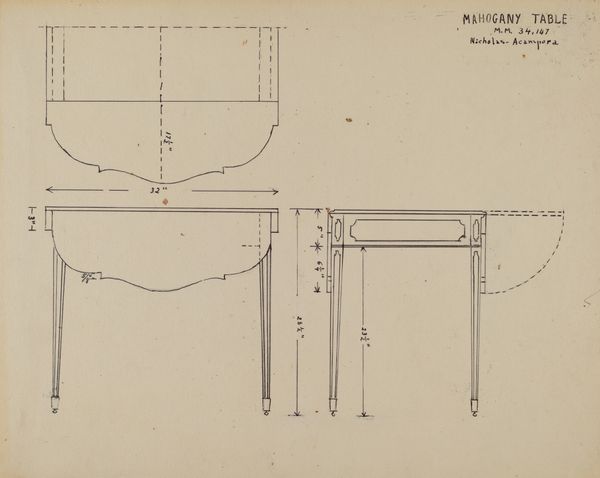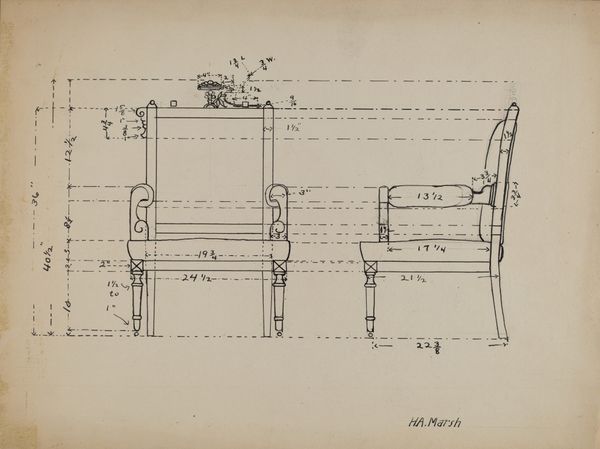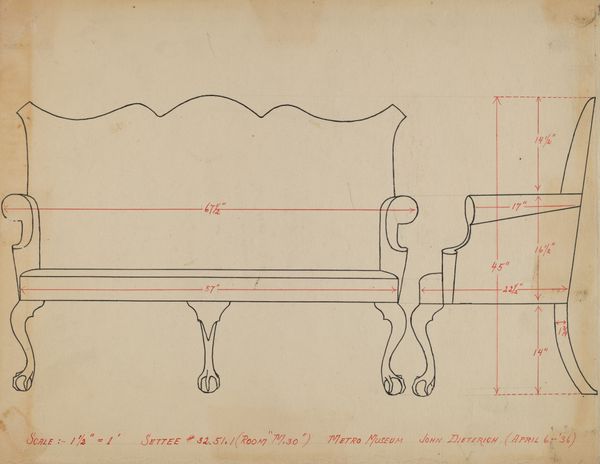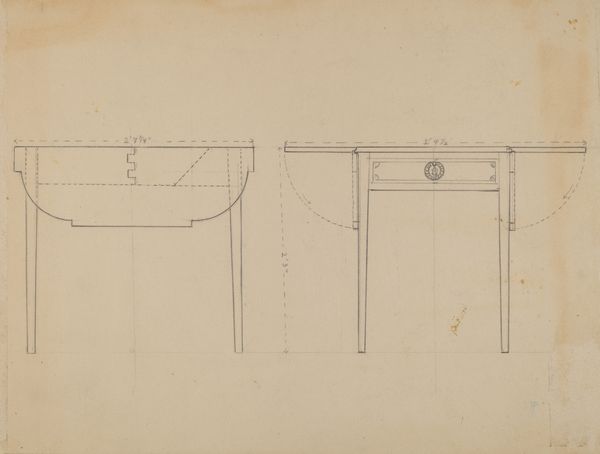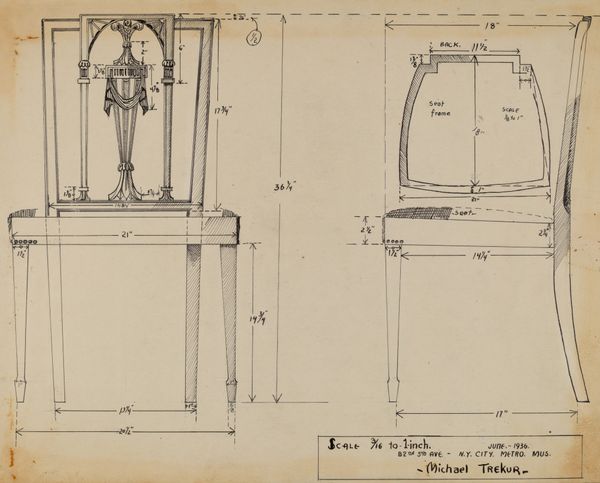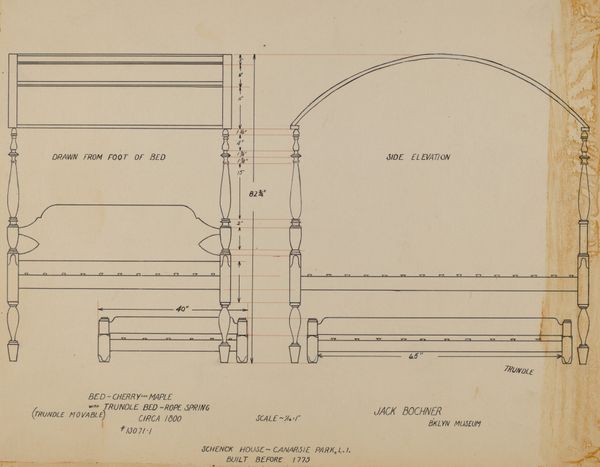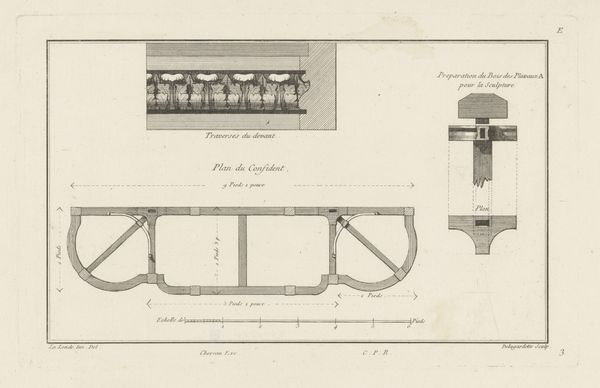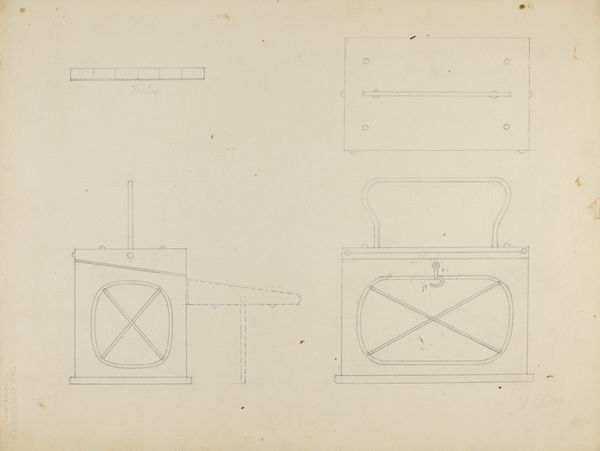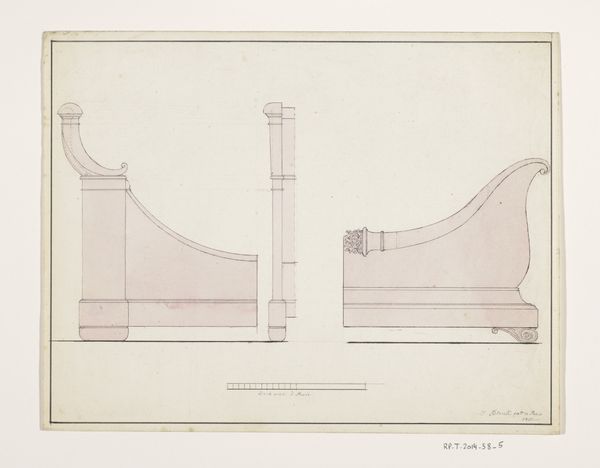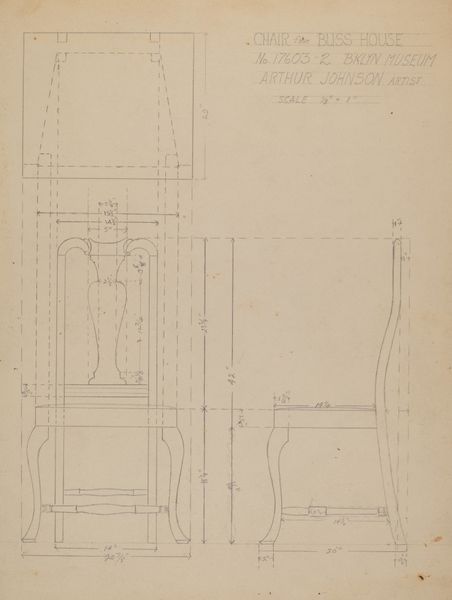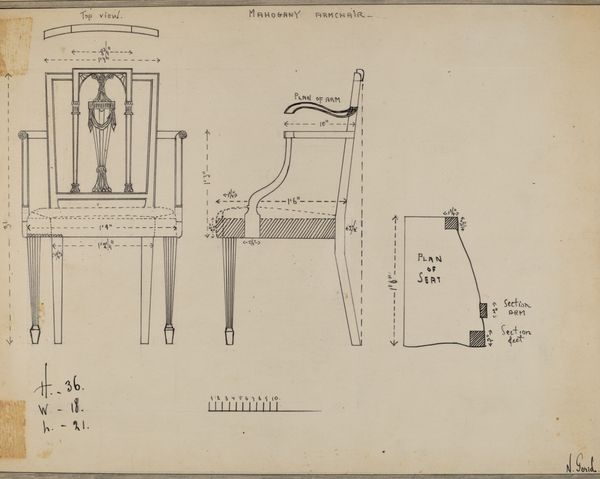
drawing, paper, pencil
#
drawing
#
paper
#
form
#
pencil
#
line
#
academic-art
Dimensions: overall: 22.9 x 29 cm (9 x 11 7/16 in.) Original IAD Object: 3'high; 6 1/2'long; 2 1/2'deep
Copyright: National Gallery of Art: CC0 1.0
Curator: This pencil drawing from around 1939, simply titled "Sofa" by Carl Weiss, gives us an interesting look at furniture design of the period. It's a meticulously rendered study on paper, showcasing the clean lines of what appears to be a very elegant piece. Editor: My initial reaction is that it evokes a peculiar stillness. The monochrome and the precise lines make it seem less like an object for comfort and more like an architectural plan for an emotion, a formalized experience of rest. Curator: That's perceptive. Weiss employs line work characteristic of academic art, very crisp and controlled. Think of how line in draftsmanship serves a practical purpose of rendering geometric volume, versus, say, looser sketching that serves an emotional purpose. But consider what is being communicated by immortalizing, on paper, this everyday object— elevating its significance. Weiss likely sought to capture ideal proportions and style, almost as an emblem of domesticity during a tumultuous era. Editor: Exactly! It's not just a sofa; it's a statement. The sofa, presented so cleanly, implies a very structured vision of home life. Notice also the draped fabric detail up top -- garlands and swags speak of neoclassicism, yet something is stiff about it. Considering the date, as Europe was on the cusp of war, this might represent an aspiration for order amid social and political anxiety, a clinging to more 'rational' historical forms, which would likely have been consumed very differently a decade later in a period of immense postwar social rebuilding. Curator: I agree; the formal, almost diagrammatic style distances us from the tactile comfort one associates with a sofa. It transcends mere function, suggesting an aspirational vision linked to its time, which is interesting considering we are looking at the precipice of war, even the beginning. Editor: Precisely. Weiss's “Sofa” gives a lens for us to think critically about design, about what cultural dreams it once harbored, and also how the public may have consumed art or interacted with the designed world at a pivotal moment in recent history. Curator: Indeed, analyzing a simple drawing of a sofa unearths the social currents and design aspirations of the late 1930s, adding layers to how we understand this object, and the period.
Comments
No comments
Be the first to comment and join the conversation on the ultimate creative platform.
